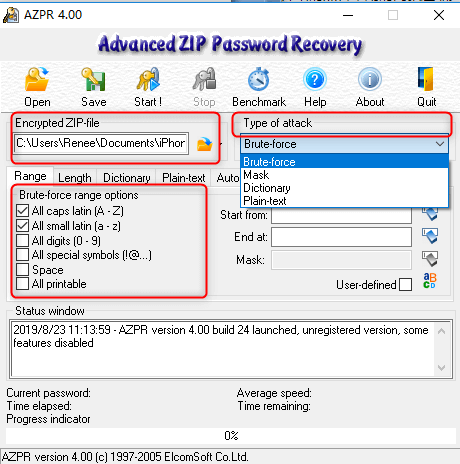
Analyze the first bytes of each PDF file to identify as many matching bytes as you can:Īfter you identified the plaintext bytes:.Open the PDF files from your lecture in the hex editor.Create a file to store your plaintext bytes, for example plain.bin.

Last chapter “ The problem with ZipCrypto Deflate” if you want to learn more.Īfter you’ve confirmed that the file was encrypted with ZipCrypto Store, do the following:

If ZipCrypto Deflate was used, it is much harder to execute the attack.If AES256 was used to encrypt the file, you can’t use this form of plaintext attack.In 7zip, open theĮncrypted ZIP file, right click on the PDF file and click on “Properties”: 8-12 bytes of known information about the stored file.Ĭheck that the used encryption method is ZipCrypto Store.The encrypted ZIP file with top secret contents.The bkcrack program from its GitHub repository.I am not responsible for any damages you cause. Please note: Attempt this attack only to ZIP archives that you have created yourself. ZipCrypto Store algorithm, you can attempt a known-plaintext attack. However, if the ZIP file is encrypted with the You can try bruteforcing all possible password combinations, but You might be wondering: Is there any way to bypass this encryption? Just out ofĬuriosity. To prevent students from peeking into the exam, they encrypt the ZIP file with a password that is handed out when the test begins.


Let’s imagine the following purely fictional scenario: ZipCrypto encryption to send confidential files, use AES256 instead. This post describes the Biham and Kocher plaintext attack on an encrypted ZIPįile that uses the ZipCrypto Store encryption method.


 0 kommentar(er)
0 kommentar(er)
